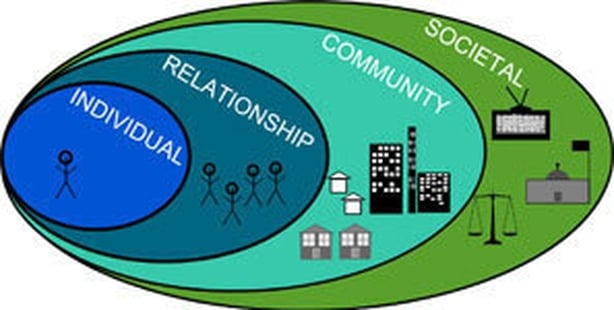Opinion: it's time to debunk the notion that resilience is a personality trait: we are not born with it, it's a human process we have to engage with
It's time to debunk the notion that resilience is a personality trait, this does not hold true. Resiliency research over the past forty years firmly rejects this traditional view. We are not born with it; we do not have a 'gene' for resilience. Essentially, resilience is a human process. The process of adapting and coping to difficulties in ways that support growth and well-being. This helps us be prepared to face new difficulties.
Difficulties can come in many forms including bereavement, mental health difficulties, financial hardship, homelessness, COVID-19, and they are experienced uniquely by each one of us. It is the process that transforms difficulties into something that is manageable and tolerable and helps us find a way forward. We are not the same as we were before the difficulty, we have gone through a process, and we will be more ready for new difficulties. This process is resilience.
We indeed do have the capacity to develop resiliency skills that support us to engage in the process of resilience. We develop these skills in childhood and across our life span, such as managing stress, regulating our emotions and behaviours, problem solving, acceptance, self-compassion, a sense of control in navigating our lives, finding hope, and making sense of experience.
From TED, 3 secrets of resilient people with Lucy Hone
I contend that in themselves, these skills may not be enough to engage in the process of resilience.
This brings us to the notion that resilience is all about individual responsibility, the capacity to develop these skills. Actually, that is not the full story. Resilience is best described as involving 3 key interconnecting elements. Yes, it involves developing skills (Element 1) but is also involves:
Element 2: Reducing the weight of stress, and;
Element 3: Building resources
If we think of a seesaw, with stress on one side from negative experiences and our resources on the other side, the process of resilience is ignited and facilitated when we have enough resources to outweigh the stress. The seesaw tips towards positive coping.
From Center on the Developing Child at Harvard University, The Science of Resilience
So, what are these resources?
These are where we find strength to keep going, in ourselves and in the social supports across our relationships, communities, and societal systems. We find them in the supportive relationships in our families, friends, colleagues, teachers, and mentors. We find them in our communities where we feel safe, and we belong: involvement in sports, social clubs, and support groups. We find them in systems in our society that provide stable employment, appropriate housing, timely access to health care, education, training, childcare and professional therapeutic support. The more we build our resources, the stronger we are to shield against stress and to engage in resilience.
The converse also holds true, in the absence of resources and when the weight of stress becomes too heavy the process of resilience is harder to engage in. The stress may be too great, becomes unmanageable and intolerable, we get stuck, stuck in toxic stress.

The seesaw tips towards negative ways of coping and over time to negative outcomes such as mental and physical health problems.
The next notion to be debunked is that resilience is an individual choice. Actually, engaging in the process of resilience is not a fair playing field. Thus, those with access to more resources are more advantaged than those who cannot access these resources: lack of access to resources does not give the same level of choice. However, reducing the stressors, such as unsafe relationships, financial hardship, homelessness, barriers to health care, education, employment, and mental health services, will help reduce this inequality.
Read more: What's going on inside a child's brain?
This brings us back to developing skills. The more coping skills we learn and nurture and draw from in the face of difficulties, the more likely we are to tilt the seesaw towards positive coping. If we think about our skills as being like the axis point (or the fulcrum) of the seesaw, as we nurture and develop them, the axis point moves to support and make it easier to tilt the seesaw towards positive coping. But to support engagement in developing skills, (Element 1), we also need to ensure the other key elements are addressed.
Thus, we need to address the reduction of the weight of stress (Element 2) by removing or at least minimising contact with unsafe relationships, removing barriers to services, relieving financial hardship and housing issues. We need to address building resources (Element 3), so they are present and available to us when we need to draw strength from them.
We need your consent to load this rte-player contentWe use rte-player to manage extra content that can set cookies on your device and collect data about your activity. Please review their details and accept them to load the content.Manage Preferences
From RTÉ 2FM's Jennifer Zamparelli, neuroscientist Brian Pennie on why life is not as simple as just learning to overcome adversity
This involves investment in those safe relationships, connections with our communities and societal systems that support us. Then, we are more likely to nurture our coping skills, the skills that support ongoing stress reduction, problem solving, self-compassion and healing.
So, the truth about resilience is that is an interconnected process between our unique genetic make-up and all of our experiences both positive and negative in connection to ourselves, relationships, communities, and society. Resilience does not come down to the individual personality or capacity, it is a collective responsibility.
The views expressed here are those of the author and do not represent or reflect the views of RTÉ



